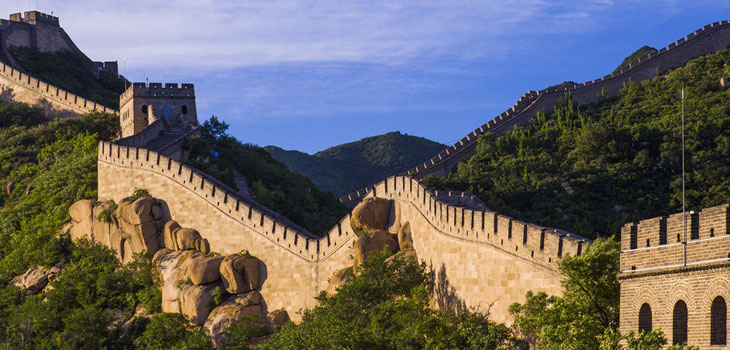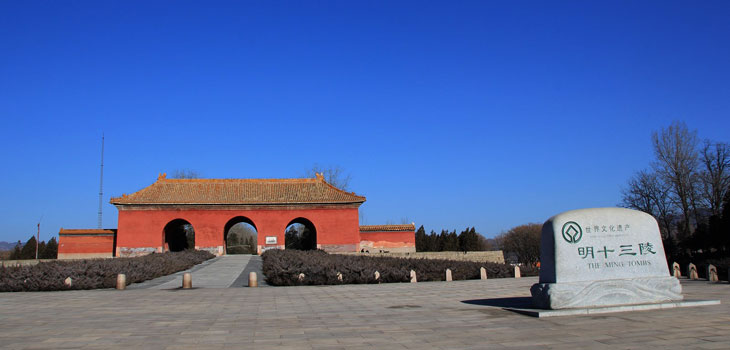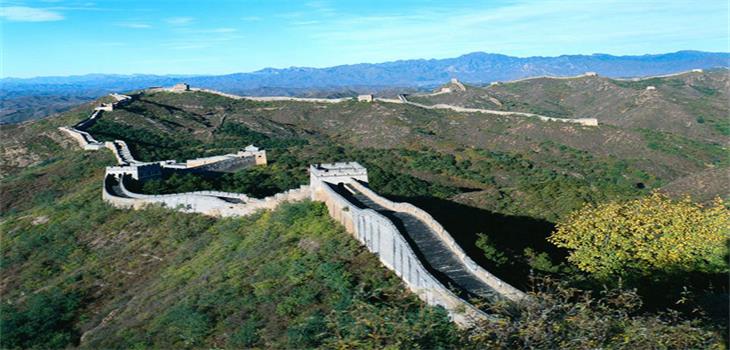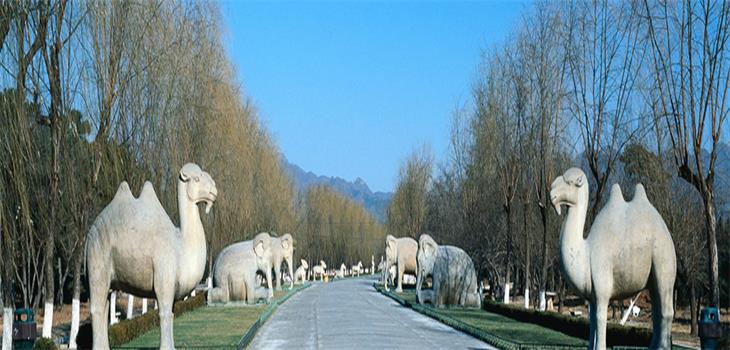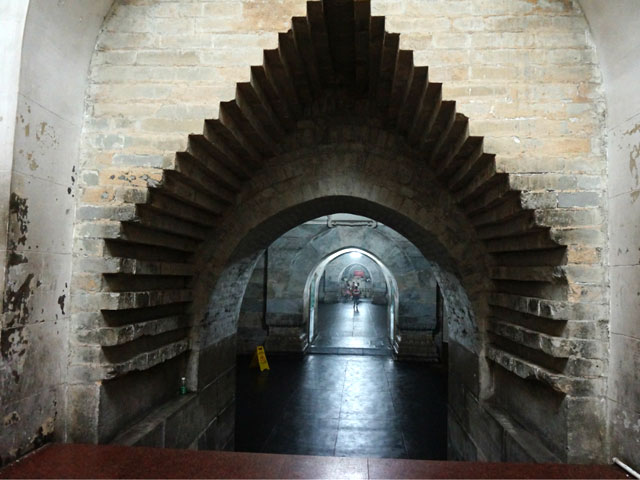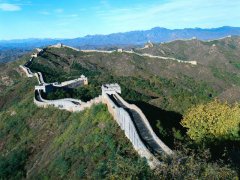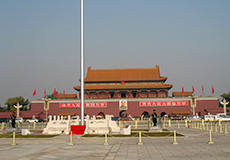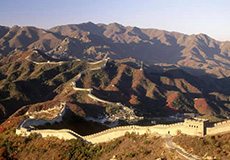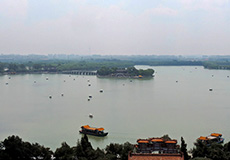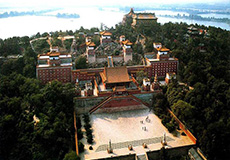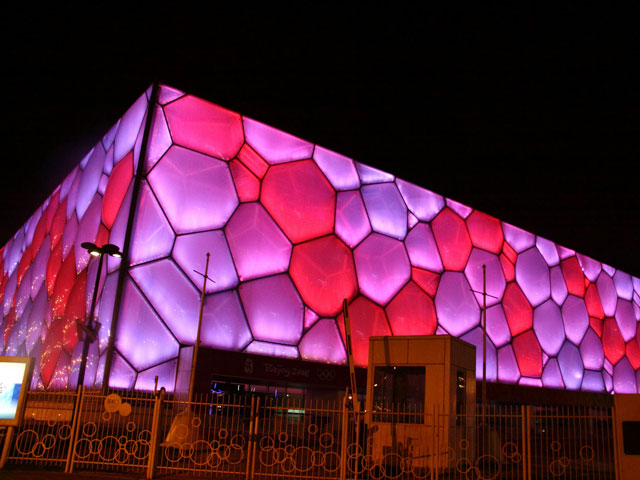1 Day Badaling Great Wall & Ming Tombs Private Tour
As the capital of China, Beijing city is China’s political, cultural center as well as a transport and international exchange hub. It has 3000 years of history. This ancient, young, solemn, and yet charming famous city of culture draws millions of domestic and overseas tourists all the year round. The city encompasses 17020 square kilometers with a population currently 14 million. It is one of the four centrally administered cities in the county, the other three being Chongqing, shanghai and Tianjin. Beijing has a continental climate of temperate zone with four seasons distinctly divide. Autumn is characterized by clear sky and crisp air as well as beautiful scenery, so the city is a magnet for visitors both home and abroad.
The Great wall, symbolizing China’s ancient civilization, is one of the world’s most renowned projects. It is a distance of 75 kilometers northwest of Beijing. Its highest point at Badaling is some 800 meters above sea level. A well-known popular saying goes: ‘He who hasn’t been to Great Wall is not a true man’. Located in Yan Qing northwest of Beijing. It was built in the beginning of Ming Dynasty and was a special section of the Ming Great Wall. As an important Pass, Ba Da Ling Great Wall means getting to all the directions in English. The total length is 4500 meters. Many beacon towers, watch towers add more magnificence to the Great Wall.
Ming Tombs was a very special place to bury the Emperors of Ming Dynasty. Some 50 kilometers northwest of the capital, the Ming Tombs are generally combined with a visit to the Great Wall. Ming Tombs consist of mausoleums of 13 Ming emperors. So it is also called Thirteen Ming Tombs, located on the southern side of the Tianshou Mountain in Changping County, about 50 Kilometers north of Beijing. Among the 13 mausoleums, the most famous ones are the Changling and Dingling. Construction of the first tomb, Changling, was started in 1409 and completed in 1427. The whole construction of the 13 Ming Tombs took more than 200years. A Sacred Way stretches 7 Kilometers from south to north through the center of the site.
from
$54.00
Duration: 1 Day
Tour Code: CE-BJ-1D13
Departure Date: Every Day
Tour Attractions:Badaling Great Wall, Ming Tombs (Changling), Olympic Stadium
Feature:
Tour Type: /Land tour + Private English speaking guide+ Private driver+Lunch
Tour Code: CE-BJ-1D13
Departure Date: Every Day
Tour Attractions:Badaling Great Wall, Ming Tombs (Changling), Olympic Stadium
Feature:
Tour Type: /Land tour + Private English speaking guide+ Private driver+Lunch
D1 Beijing
Pick-up from your hotel, and then drive to Ming Tombs (50 miles away from downtown about one hour driving). The thirteen Ming Tombs are the best-preserved Chinese imperial tombs with 500 years history. You will visit Changling, the head and the largest tomb of Ming Tombs, where Emperor Yongle (the first emperor in Beijing) and his Empress Xu were buried. The sightseeing on the Ming Tombs takes about 1 hour.
Pick-up from your hotel, and then drive to Ming Tombs (50 miles away from downtown about one hour driving). The thirteen Ming Tombs are the best-preserved Chinese imperial tombs with 500 years history. You will visit Changling, the head and the largest tomb of Ming Tombs, where Emperor Yongle (the first emperor in Beijing) and his Empress Xu were buried. The sightseeing on the Ming Tombs takes about 1 hour.
Before having lunch, you will have 45 minutes for a short visit of Jade Carving Factory. The jade carving is a famous special Chinese product, a blend of the excellent skill on carving and Chinese traditional cultures.
Then having a traditional Chinese lunch at tourist restaurant. After lunch, driving to the Badaling Great Wall. The hike on Badaling Great Wall takes 2 hours. Badaling section is the most famous and best-preserved wall. Its highest point at Badaling is some 800 meters above sea level.
Cable car is available and optional. On the way to your hotels, we also arrange a short exterior visit to "the Birds Nest,Water cube"---the main Olympic Stadium for the 2008 Olympic Games. Then you will have a chance to enjoy the Chinese traditional Silk arts. After that, transferred back to your hotels.
| Price (Based on per person and shown in US dollars): |
|
Group Size
|
Tour Class
|
Tour Price Per person
|
| 1 Person |
Tourist Class
|
$180
|
| 2-3 Person |
Tourist Class
|
$103
|
| 4-5 Person |
Tourist Class
|
$72
|
| 6-9 Person |
Tourist Class
|
$54
|
Our prices included:
1. Entrance ticket. The entrance ticket of Badaling Great Wall and Ming Tombs,
2. Guide. An English speaking guide will be provided, who will accompany you from the start of tour to end of tour.
3. Private Transfers during tour. Our guide and driver will pick-up you at your hotel on time and drop-off you after the tours.
4. Meal. A typical Chinese lunch will be arranged accordingly at local restaurant.
5. Shopping. Jade Store.
6. Service Charge & Government Taxes.
2. Guide. An English speaking guide will be provided, who will accompany you from the start of tour to end of tour.
3. Private Transfers during tour. Our guide and driver will pick-up you at your hotel on time and drop-off you after the tours.
4. Meal. A typical Chinese lunch will be arranged accordingly at local restaurant.
5. Shopping. Jade Store.
6. Service Charge & Government Taxes.
7. Insurance. We provide a free insurance of accident and casualty for each traveler. The highest refund is RMB 300000.00. Detailed terms please view our contract with Ping An of China.
Our prices not included :
1. Fee of cable car.
2. Tips to the guide and driver
3. Your hotel.
1. Fee of cable car.
2. Tips to the guide and driver
3. Your hotel.
If you require, we can book hotels in Chengdu, and make private airport and city tour necessary.
Are you interested in this itinerary ? Send us a message and let us help you plan and book your China vacation based on this sample. Response within 24 hours. Contact our Travel Consultant.

